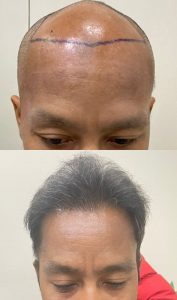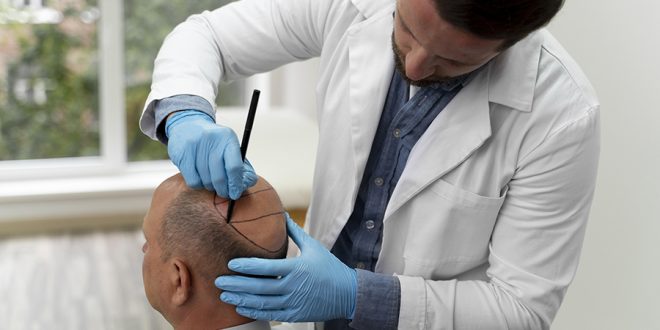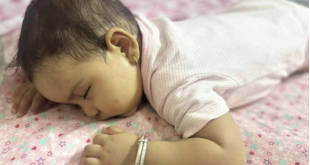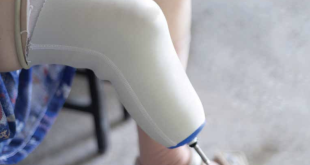Hair transplantation is a minimally invasive surgery where hair follicle is transplanted from a donor area of the patient’s own body to the bald area of head or other desired areas. Hair transplantation can also be used to restore eyelashes, eyebrows, beard, chest hair, pubic hair, and to fill in scars caused by accidents or surgery, such as face-lifts and previous hair transplants. We at Avaran have been doing hair transplantation since October 2015, and successfully completed more than 2000 surgeries.
Why does hair loss occur?
A normal healthy head contains approximately 1, 00,000 hairs, with an average density of 100 per square centimeter. Male pattern baldness refers to loss of hair usually occurring after the age of 25 years. Androgenetic alopecia, which means a combined effect of genes inherited from the parents as well as the hormone testosterone, referred to as androgens or male sex hormones. The genetic influence is found more from the maternal side.
Theory of hair transplantation- donor dominance theory
Male pattern baldness usually occurs from the sides of your forehead, regarded as bitemporal recession, which gradually progresses backwards. However, the backside of your hair contains a permanent zone of hair, which doesn’t fall even at extremes of old age. In the late 1950s, New York dermatologist Norman Orentreich began to experiment with free donor grafts to balding areas in patients with male pattern baldness. He demonstrated that such grafts were “donor dominant,” as the new hairs grew and lasted just as they would have in their original home. Walter P. Unger defined the parameters of the “safe donor zone” from which the most permanent hair follicles could be extracted for hair transplantation. To explain the above theory in layman terms, the characteristics of the transplanted hair from “safe donor zone” would be similar to their life in their original home, that is, the backside of the hair, which is permanent.
Harvesting methods
Hair can be taken from the donor site by two methods—strip method and follicular unit extraction (FUE). Strip method means that a strip of skin 10-15 cm long and 1-1.5 cm wide along with hair follicles is excised from the back of your head, which leaves a long scar on the back of your head. Single follicular units are then separated out of the strip to transplant on the recipient site. Follicular unit extraction (FUE) is a modern technique where you extract single follicle units or grafts from in between, which usually heals in a week or two, so that there is no scar. The extracted follicles should be kept in a cool temperature of around 4-50C, and can be transplanted directly without further processing.
Implantation
The extracted follicles can be implanted on the recipient site directly, using implanters, or by making slits beforehand.
Postoperative care
After transplantation, the donor site is covered with a bandage and paper tape, which is usually taken out after 48-72 hours. After removal of the bandage, you need to apply antibacterial ointment (Mupirocin or Neosporin) for seven days. The recipient site is left open, or covered with loose cap, so that there is no injury to that part. However, you need to sprinkle the part with normal saline every two-four hours. After 48-72 hours, once the transplanted hair has set in, the area is cleaned with baby shampoo. Application of minoxidil lotion 5%/10% is recommended for at least one year, as it increases the blood supply to the transplanted hair for better growth.
Side effects
As with any other minor surgery, hair transplantation can have complications during surgery, such as allergic reaction to any medicine, anxiety, palpitations, and bleeding, which are individual variances. After the surgery, some patients can feel pain over the donor area or recipient site, which is again subjective or of individual variance, which can be controlled with painkillers. Due to local anesthesia injected to the donor and recipient areas, some patients can develop swelling of face, especially the forehead and around the eyes, which usually disappears within a week. After a few days, crusting can occur at the recipient site, which can be cleaned using shaving foam. Apart from these, some patients can have minor pain, tingling sensation, or folliculitis over the donor or recipient site lasting six-eight weeks.
Before

After six months
FAQs
1. Does the transplanted hair grow naturally like your original hair; and can we shave?
Yes. The hair starts growing as early as 48-72 hours after transplant and grows upto the level of hair cut in saloon by three-four months. Maximum density of the hair is attained in one year. And, hair grows again even after shaving.
2. Does the transplanted hair fall?
Yes, the transplanted hairs start falling from two weeks upto two months, referred to as shock loss. New hair growth occurs from the roots and grows again by three-four months. Maximum density of the hair is attained in one year.
3. Does hair transplant affect your brain?
Not at all. Most of us are concerned because we think we are operating on the head, and it is vital to know if it affects the brain. Our scalp has five layers—skin, subcutaneous tissue, loose areolar tissue, and pericranium. The brain is protected by our skull bone below these five layers. Hair transplant is done just on the skin, the topmost layer, and has no effect on the lower layers, bone, or brain.
4. Can hair transplant cause cancer?
No. Hair transplant is just transferring your hair follicles from one part of the body to another. It is not adding any chemicals or cancer-causing agents to your body.
5. Can we have second session of hair transplant?
Yes, we can go for a second or third session if we wish to revise the hairline, add more hairs even after years of transplant.
 Medicosnext
Medicosnext




